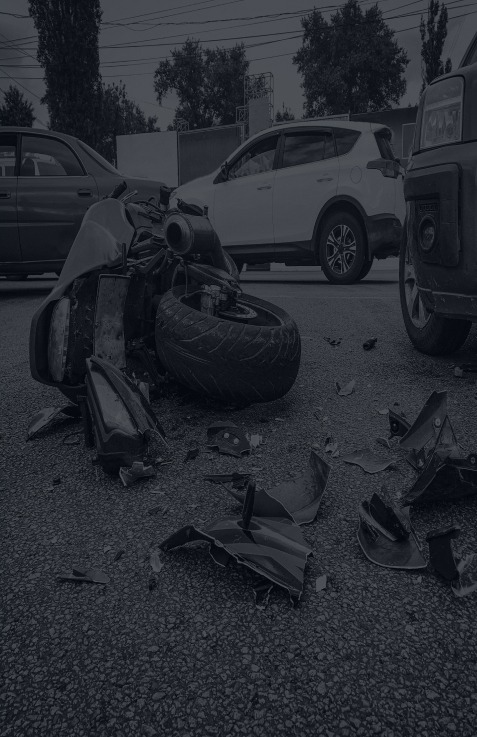![]() Contact Us 866-499-8989
Contact Us 866-499-8989
Mass Tort Lawyer

25+ YEARS OF EXPERIENCE
When you hire us, you're adding unmatched experience to your team, ensuring you get the best possible outcome.
99% WIN RATE
Our firm maintains an impressive 99% win rate, even while accepting difficult cases other law firms have turned away.
NO UPFRONT FEES
We are not afraid of trial, and insurance companies know this. If it’s in your best interest, we are always trial ready.
- What Is a Mass Tort Lawsuit?
- What do Mass Tort Lawyers Do?
- What Types of Cases Qualify as Mass Torts?
- How do I Know If I Have a Valid Mass Tort Claim?
- How do Mass Tort Lawsuits Differ from Individual Lawsuits?
- How does the Mass Tort Process Work?
- How Long does a Mass Tort Lawsuit Usually Take to Resolve?
- Can I Join an Ongoing Mass Tort Lawsuit?
- What Compensation Can I Expect from a Successful Mass Tort Claim?
- Speak to a Mass Tort Lawyer About Your Legal Situation Today
- Home
- Mass Tort Lawyer
Are you interested in learning more about mass tort lawyers? Our team at Zanes Law can provide you with detailed information about the kinds of claims these attorneys handle and how they can assist you.
We provide information about mass tort lawsuits, what mass tort lawyers do, and how the process works. If you have additional questions about mass torts, you can call or complete our online contact form.
What Is a Mass Tort Lawsuit?
A mass tort lawsuit is a type of civil action where a large group of plaintiffs collectively bring claims against one or several defendants for widespread injuries or damages suffered due to the defendant’s conduct.
Mass torts involve hundreds, thousands, or even tens of thousands of individual plaintiffs harmed in a similar way. Rather than filing hundreds of separate lawsuits, lawyers consolidate plaintiffs’ claims into a single legal action against the defendant(s).
In mass tort claims, all plaintiffs allege similar misconduct, defective products, or negligence on the part of the defendant(s) that caused their injuries and damages in mass tort claims.
What Makes Mass Tort Lawsuits Stand Out?
Some mass tort claims involve multidistrict litigation. Lawyers often consolidate federal mass tort cases that arise in multiple districts via multidistrict litigation (MDL) procedures.
Defendants in mass torts are often major corporations like:
- Pharmaceutical companies
- Medical device manufacturers
- Chemical firms
These parties have a lot of resources to throw at cases. Therefore, you may want to work with specialized plaintiffs’ attorneys, as these complex cases require experienced mass tort plaintiff attorneys to litigate on behalf of the large group.
Finally, mass torts typically utilize structured settlement systems to compensate all deserving victims, not just those who file suit early.
What do Mass Tort Lawyers Do?
Mass tort lawyers specialize in handling complex lawsuits on behalf of a large group of plaintiffs who have been injured or harmed in a similar way, usually by the same defendant or group of defendants. Here are some of the critical things mass tort lawyers do:
Identify Potential Cases
Mass tort lawyers investigate incidents, products, medications, and environmental exposures to identify situations that may warrant a mass tort case. This action requires extensive research and analysis.
Recruit Clients
Once lawyers identify a potential mass tort situation, lawyers work to recruit as many plaintiffs as possible who sustained harm due to the actions of the defendant(s) in the same or highly similar ways. A large group strengthens the case.
Handle Pre-Trial Work
Mass tort attorneys handle extensive pre-trial work that can include:
- Discovery
- Deposing witnesses
- Defending against motions to dismiss
- Finding expert witnesses
During this period, lawyers may also handle settlement negotiations. These negotiations take place over months or years to reach a fair resolution for the entire group of plaintiffs.
Initiate Litigation
Additionally, mass tort lawyers file either class action or multi-district litigation suits that consolidate all the plaintiffs’ claims into a single legal action against the defendant(s). If the case can’t reach a settlement, mass tort lawyers take the consolidated case to trial.
Manage Settlements
Mass tort lawyers oversee the proper distribution of any settlement awards to the individual plaintiffs upon a settlement or favorable verdict. This process can ensure everyone receives compensation for their losses.
Handle Defendants’ Appeals
Mass tort lawyers can defend any favorable verdict or settlement through the lengthy appeals process. This process may take additional years after the initial mass tort lawsuit. You can learn more about what mass tort attorneys do with our team.
What Types of Cases Qualify as Mass Torts?
Many types of cases may qualify as mass torts. We review the specific qualifications for these claims with individuals who experienced injuries or financial losses for various reasons. Your attorney may help if your claim involves the following:
Defective or Dangerous Medical Devices
Cases where large numbers of patients sustain injuries caused by problems with medical implants, prosthetics, surgical mesh, IUDs, or pacemakers, may qualify for mass tort litigation. We can discuss this situation with you.
Side Effects of Pharmaceutical Drugs
Many mass tort lawsuits involve medications that cause widespread harmful side effects not sufficiently warned about. Some examples are Vioxx, talc powder, and RoundUp.
Environmental Disasters
You may end up in a mass tort lawsuit after situations where large populations get exposed to pollution, contaminated water, toxic waste, or oil spills. These disasters can leave you with lasting financial losses.
Product Liability
Product liability cases where many consumers suffer injuries caused by dangers or defects in consumer products like vehicles, household appliances, and children’s toys can lead to mass tort lawsuits. Lawyers must look at each situation on an individual basis.
Exposure to Dangerous Chemicals
Exposure to asbestos, radiation, toxic chemicals, and food additives that cause health issues can result in a mass tort claim. This situation includes workplace exposure, where employers allow workers to face dangers without warning.
Medical Malpractice
A mass tort claim may result when large groups of patients suffer harm caused by a physician, hospital system, or type of procedure or treatment. We can help you learn more about mass tort claims involving birth injuries and other acts of medical malpractice.
Data Breaches
Mass cybersecurity and privacy violations can sometimes expose consumers’ personal data. This exposure can lead to financial losses on a large scale, which may lead to a mass tort claim.
Consumer Fraud
Finally, consumer fraud may result in a mass tort claim if a company’s business practices mislead, deceive, or economically harm consumers en masse. A mass tort lawyer can review these situations on an individual basis to see if they qualify for a claim.
The key unifying factor for mass tort cases is a single defendant or group of defendants responsible for widespread injuries, deaths, or economic damages affecting a large population. This factor makes consolidation into mass litigation an effective legal strategy.
How do I Know If I Have a Valid Mass Tort Claim?
Lawyers look at several key factors when determining if you may have a valid mass tort claim. Your legal team may look for the following:
Shared Cause of Harm
You may have a valid mass tort claim if your injuries or damages were caused by the same product, medication, chemical, or medical device. as those of other plaintiffs in the mass tort litigation.
A Large Impacted Group
Mass tort claims only go through if a sufficiently large group of people experienced similar injuries from the same source, usually in the hundreds or thousands. You can reach out to a mass tort lawyer if you believe you qualify for a claim.
An Identifiable Defendant
Mass tort lawyers look for an obvious company, manufacturer, employer, or hospital responsible for producing or distributing the product or substance that harmed so many people in the same way.
Evidence of Significant Injuries
Generally, the injuries sustained need to be substantial enough to warrant legal action, not just minor inconveniences. Evidence could include the financial costs of receiving medical treatment for these injuries.
Proven Negligence
You may have a valid mass tort claim if a lawyer can identify indications that the defendant acted negligently, unethically, or intentionally harmed consumers through action or inaction.
Information About the Statute of Limitations
Your claim needs to fall within the prescribed legal timeframe after the injuries or damages occurred for you to qualify for a mass tort claim.
How do Mass Tort Lawsuits Differ from Individual Lawsuits?
Several vital differences indicate how mass tort lawsuits differ from individual lawsuits. These differences may involve:
Plaintiffs
Mass tort lawsuits involve a large group of plaintiffs, sometimes thousands or more. Individual lawsuits only have one or several plaintiffs.
Consolidation
The court consolidates mass tort claims together to handle them more effectively, addressing the needs of many people at once. Individual claims remain separate legal cases.
Resources
Mass torts utilize pooled legal resources and attorneys representing the entire group. Individual cases have resources dedicated to a single plaintiff.
Defendants
Mass torts usually sue large corporations with extensive resources. Individual lawsuits can be against companies, individuals, or government entities.
Litigation Process
Lawyers coordinate mass tort pre-trial procedures like discovery across all plaintiffs. Individual cases progress independently, often making them less complicated than mass tort claims.
Settlements
Mass torts generally seek global settlements for the entire group. Individual cases settle only that plaintiff’s claim.
Compensation Distribution
Generally, mass tort settlements distribute funds across all plaintiffs. Individual settlements provide direct compensation to the sole party who filed the claim.
Timeline
Mass torts typically take years longer, given their complexity. Individual cases often resolve more quickly, depending on complexity. However, the time for both varies on an individual basis.
Degree of Plaintiff Control
Individual plaintiffs tend to have more control over case details and settlement decisions. Mass tort plaintiffs have less control simply because they share a claim with many other individuals who all have concerns.
Attorney Fees
Mass tort lead attorneys earn higher fees given the massive coordination and work involved for the group. Fees for individual cases are more modest per plaintiff.
So, in essence, mass torts consolidate many similar complex claims together while individual lawsuits handle separate harms and damages on a case-by-case basis.
How does the Mass Tort Process Work?
A mass tort lawyer can provide you with an overview of how the mass tort process works. In general, you may expect the process to include these steps:
Case Origination
A mass tort originates when attorneys identify an incident, product, medication, or exposure that has caused widespread harm to a large population.
Investigation and Research
Plaintiff attorneys thoroughly investigate the background, science, risks, and company knowledge about the product or substance during a mass tort claim’s investigation and research phase.
Plaintiff Recruitment
Law firms advertise and recruit potential plaintiffs who were harmed in similar ways by the same source during plaintiff recruitment. Building a large plaintiff group takes time, which can stretch the length of a mass tort claim.
Discovery
Mass tort lawyers perform extensive discovery to obtain evidence, internal documents, research data, and depositions from defendant company witnesses. They use this evidence to strengthen the mass tort claim.
Lawyers may also find and hire expert witnesses. These individuals can analyze evidence and make connections between the product or exposure and plaintiffs’ injuries, boosting the mass tort’s chance of success.
Case Management
The presiding judge will manage and coordinate the litigation and adoption of procedures for the plaintiff group. These procedures can vary from one case to the next. A mass tort lawyer can ensure you understand all guidelines for your situation.
Bellwether Trials
Some mass tort claims involve Bellwether trials or sample individual cases that go to trial first to assess case value before broader settlements occur.
Resolution
Mass tort cases end either in full settlements for plaintiffs or through dismissal if merit is not proven. Some continue for decades. Additionally, defendants who lose at trial will invariably appeal the verdict or settlement amount, dragging out the timeline further.
In summary, mass torts follow an extensive consolidated litigation process before resolution due to their size and complexity.
How Long does a Mass Tort Lawsuit Usually Take to Resolve?
How much time does it take to resolve a mass tort claim? Mass tort lawsuits typically take many years and often decades to fully resolve due to their size and complexity. Here are some factors that contribute to the lengthy timeline:
Complicated Investigations
Mass tort lawyers require a lot of time to investigate the claims and gather evidence thoroughly. This process can take mass tort lawyers several years before they even file a case.
Trial Preparation
Mass tort claims require extensive pre-trial preparation, including:
- Discovery
- Deposing witnesses
- Procedural motions
- Coordinating among large plaintiff groups
All of these activities slow the timeline.
Mass Tort Settlement Talks
Settlement negotiations happen slowly over years during mass tort claims, with some plaintiff groups settling before others. Discussions start and stop without any pattern, drawing out the length of these claims.
Judges’ Schedules
Mass torts have complex motions and hearings. Judges fitting these hearings and motions into their busy schedules can cause delays that lengthen the mass tort resolution process.
Defendants’ Appeals
Defendants almost always appeal verdicts, adding years of appeals litigation before plaintiffs receive compensation. Mass tort lawyers factor these appeals into the time to handle claims.
Late Emerging Claims
Some mass tort injuries and diseases take decades to manifest, continuously expanding the plaintiff pool over many years. Mass tort attorneys strive to include all possible plaintiffs in the claim, regardless of when they emerge.
Scientific Developments
As new research emerges, it may link a product or substance to injuries that weren’t known before, evolving the mass tort case. These discoveries may require additional investigation and plaintiff discovery, impacting the total length of the claim.
So, in summary, the immense scope, coordination, volume of evidence, and plaintiffs involved ensure mass tort cases virtually always take multiple years, if not decades, from filing to ultimate closure.
Can I Join an Ongoing Mass Tort Lawsuit?
In many cases, you can join an ongoing mass tort lawsuit under certain conditions. Generally, you may qualify to join a current claim if you meet all eligibility requirements.
Requirements to Join an Ongoing Mass Tort Lawsuit
Your mass tort claim must involve the same defendant(s) and subject matter as the existing lawsuit. For example, your injuries must stem from exposure to the same medication, chemical, or defective product that is the basis for the current mass tort.
Additionally, your claimed injuries or damages need to be similar in nature to those alleged by other plaintiffs already involved in the litigation.
Finally, there must be a sound basis for asserting the same causes of action against the defendant(s). For example, you could file a product liability or negligence claim based on conduct a lawyer has already sued a company over.
Factors that Can Impact Joining an Ongoing Mass Tort Lawsuit
Keep in mind that your ability to join a current mass tort lawsuit may have to follow the applicable statute of limitations. Typically, this means your injuries or the defendant’s relevant conduct needs to have occurred relatively recently.
Additionally, you can only join if the current lawsuit is still ongoing and unresolved. Settlements or court resolutions that have already occurred in the case may preclude new plaintiffs from joining.
Finally, procedural rules like class certification requirements in class action cases must allow additional plaintiffs to join the litigation at that stage. A mass tort lawyer can review your situation to see if you qualify to join.
Can Judges Prevent You from Joining a Mass Tort Lawsuit?
The judge overseeing the mass tort case has discretion in allowing new plaintiffs and claims to consolidate into the litigation. Some judges may refuse to allow you to join a claim.
If you meet all conditions to join a mass tort lawsuit, then generally, new plaintiffs with similar grievances against the same defendant(s) can join an existing mass tort lawsuit until it is entirely resolved or closed to new claims.
An experienced mass tort attorney can advise you on eligibility.
What Compensation Can I Expect from a Successful Mass Tort Claim?
The compensation you can expect from a successful mass tort claim depends on several factors. Generally, available compensation depends on:
The Type and Severity of Your Injury
Plaintiffs who suffered severe injuries, illnesses, or death typically receive larger settlements through mass tort lawsuits than those with mild injuries.
The Extent of Your Damages and Losses
You may receive more compensation if your mass tort lawyer can prove that you experienced substantial financial losses due to lost income, medical costs, and other damages.
The Strength of Causation Evidence
Strong expert evidence linking the product or exposure directly to the harm you suffered can increase the potential compensation provided by a mass tort claim.
Your Age
Younger plaintiffs have higher future losses, so compensation takes age into account. Your mass tort attorney can provide more information about this factor.
Potential Shares of the Settlement
The larger the plaintiff group, the more individual settlements the court must apportion. Individual trials generally gain higher awards, as do mass tort claims with fewer plaintiffs.
The Negotiated Settlement Matrix
Mass tort settlements utilize complex matrices to distribute funds fairly across all plaintiffs depending on individual factors. The specific matrix used in your claim may impact the funds you receive.
The Defendant’s Payment Ability
Your compensation may depend on how much the defendant(s) can afford to pay. Some dependants go bankrupt, rendering them unable to cover all the ordered compensation in a mass tort claim.
The Amounts of Previous Verdicts and Settlements
Compensation in mass tort claims often aligns with precedents and averages set in previous trials and settlements in the same litigation.
Your Attorney’s Fees or Costs
Generally, mass tort lawyers handle claims using contingency fees and only receive funds after resolving your claim. Therefore, the law firm can deduct your agreed-upon contingency fee percentage and case expenses from any final award or settlement.
While each case is different, successful mass tort claims often result in average settlements in the tens to hundreds of thousands of dollars per plaintiff after legal fees. But settlements ranging into the millions do occur for severe harm and losses.
Speak to a Mass Tort Lawyer About Your Legal Situation Today
You can turn to a mass tort lawyer if you believe you have a claim against a large company or manufacturer. Our team at Zanes Law can review your situation and help you determine the best way to proceed with your case.
Learn more by calling or filling out our online contact form.
This was the 1st time I've used Zanes Law. It was a fantastic experience for having to go through a situation most would rather not. The attorney and staff were always available to answer my questions and explained things clearly and were obviously 100% in my corner. My attorney, Jim, was very genuine and made me immediately comfortable when I came in to speak with him about my case. Every case manager I dealt with was patient and helpful. I would definitely return to Zanes should the time ever come again that I need a personal injury firm.
Kelly Kay
Personal InjuryHello! As client of Zane law I was recently involved in accident last September and my recovery is still healing but Zane law checked on me and made sure everything was going smoothly and made sure I was on the right step every single time. I definitely would used them again ! They have helped my recovery so much and being a mom of 6 it has made my days a little more better/easier! From chiropractor to message therapist and making sure I had that extra help like trauma counseling to get through my days! I thank you so much Rachel and Annabelle!
Monique Cota
car accidentZanes Law was a terrific legal experience. I first went to a law firm that only wanted me to go to physical therapy and pad the bill, so they could utilize my insurance policy to its capacity. Once I went to Zanes, they were honest, professional and prompt with calls almost once a week. Sometimes I got a call just because we did not have contact for close to two weeks. Some calls were to just ask how I was doing. I also received more money than originally discussed. Great job Zanes Law!!!!! If need be I will use their services again. THANKS
James Doligale
Personal InjuryZanes Law was a terrific legal experience. I first went to a law firm that only wanted me to go to physical therapy and pad the bill, so they could utilize my insurance policy to its capacity. Once I went to Zanes, they were honest, professional and prompt with calls almost once a week. Sometimes I got a call just because we did not have contact for close to two weeks. Some calls were to just ask how I was doing. I also received more money than originally discussed. Great job Zanes Law!!!!! If need be I will use their services again. THANKS
James Doligale
Personal Injury
$1,320,000
Car AccidentNo one ever expects to be involved in a car accident, suffer an injury, or need to begin looking for a Phoenix car accident attorney.

$1,065,000
Wrongful DeathWith the help of a Phoenix wrongful death lawyer, you should receive compensation for your losses.

$700,000
Slip and FallWhen you are hurt in an accident, our Phoenix slip and fall lawyers are only a phone call away.

$1,100,000
Motorcycle AccidentOur motorcycle accident lawyers in Phoenix understand how dangerous it can be to ride a bike. So much so that we have created safety articles for years.





Tell us what happened…
Receive a Free, No-Obligation, Case Evaluation Now
